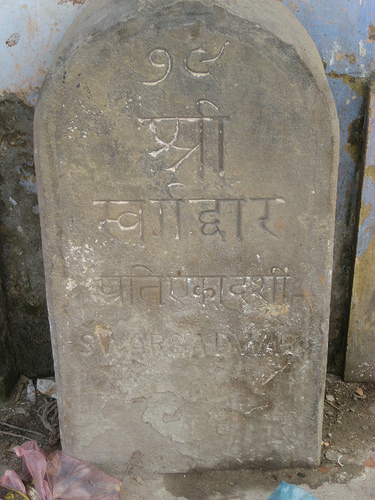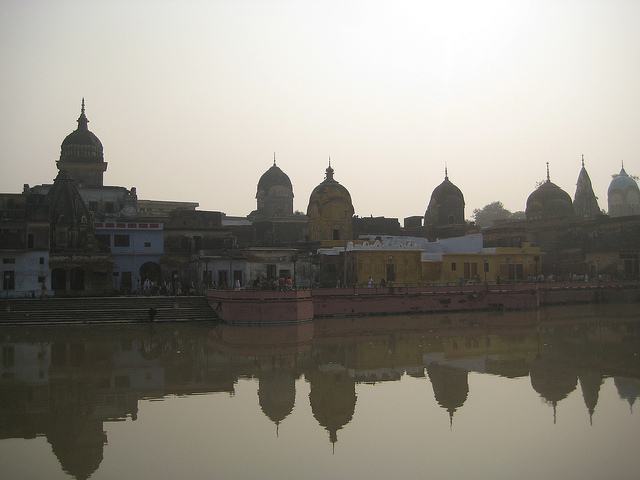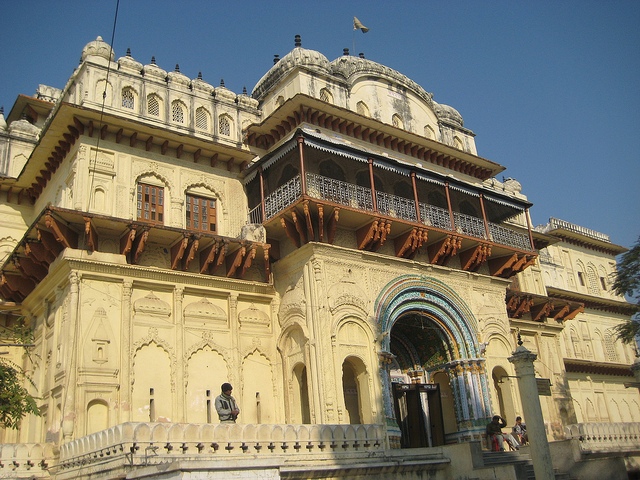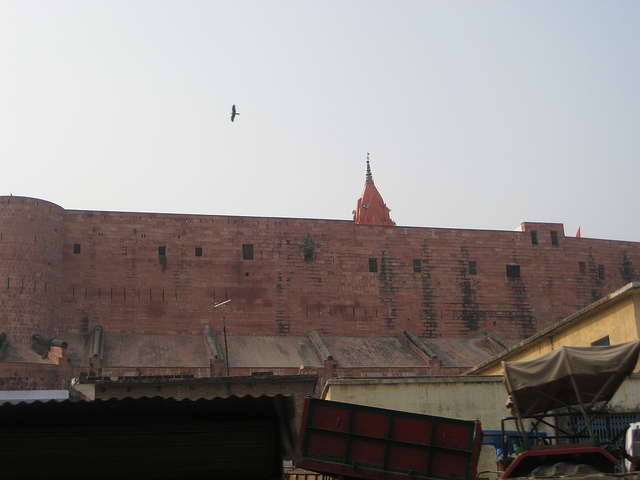Swarg Dwar
According to mythology, Lord Rama is said to have been cremated here.

According to mythology, Lord Rama is said to have been cremated here.

It is said that Sage Shringi had performed the ‘putrakameshti yagna’ for king Dashrath at this place. It is a beautiful scenic spot, situated on the banks of river Saryu.
These are the bathing ghats constructed on the banks during the period between 1984-1985. There were enormous bathing ghats through out the banks of the holy river Sarayu and the ones at Nayaghat were immersed in the torrential rains and currents of the river water. Then the then chief minister and the Irrigation Minister of UP ordered to raise a Paidi here for the convenience of the enormous pilgrims who come over there to have a holy dip. Water in the Paidi is being taken from Sarayu by Motor Pumps.
The long plight of steps that goes in parallel lines to the river water serves as a good ground for the devotees to have their bathing and allied activities. Flood Works Division of the Irrigation Department, UP Government, is managing the repairing works of Paidi.


Situated in the western part of Ayodhya Ramkot Citadel is one of the most frequented monuments here. This ancient citadel is positioned on a raised platform. Supposedly the fort of Lord Rama once existed on this site. Devotees flock this place at all points of the year. However during Ramnavami the place is seen at its colorful best with pilgrims from all parts of India thronging this spot and offering their prayers. The whole area is surrounded by other temples and maths. It is believed that Hunuman use to guard this citadel from a secret cave.
A legendary temple that boasts of a divine love story of a Nag Kanya, the temple of Nageshwarnath is the only shrine that has been able to strive the beatings of time. It is believed that the temple was erected by Kush, son of Ram.
Kanak in Hindi is Gold and the temple got its name from the gold festooned deities of Rama and Sita. The statues of Rama and Sita have been bejeweled with a great amount of gold, which presents a magnificent appeal to the entire premises of the temple. Greatly connected to tradition and mythology it is believed that this temple was built by Kaikeyi as a mark of repentance. But history says that the then queen of Tikamgarh, Virshbhanu kuvari put up this temple in 1891.

Ayodhya is not only the birthplace of Lord Rama but is also held on high esteem because of its association with Jainism as a religion. Several followers of the Jainism faith from all over India frequent Ayodhya every year. This is because of the fact that there are several Jain temples in Ayodhya.
It is believed by the followers of Jainism that Ayodhya is the birthplace of as many as 5 of his Tirthankaras. These Jain temples mark the place where these Tirthankaras were born. It is said that Kesari Singh, the treasurer of Nawab of Faizabad, built 5 separate shrines to mark the birthplace of these Tirthankaras. The temples bear the date of vikram samvat 1781.
Legendary belief is that Hanuman Garhi is the place where Hanuman used to inhabit. But history reveals that this place was donated by the Nawab of Avadh and during the middle of the 10th century a temple was constructed at the site by one of the courtesans of Nawab.
One of the popular shrines in Ayodhya Hanuman Garhi is believed to be the fulfiller of every wish and hence it is often crowded with the fortune seekers. Hanuman Garhi depicts as a cave temple where a flight of 76 steps fetches the devotee in to its holy premises. The inner sanctum embellishes the idol of infant hanuman in his mother’s lap and though the idol is quite unimpressive the devotees earnestly believe that it would get them all the boons they ask for.
